Tuesday☕️

Trending:
- Yesterday, April 28, 2025, a widespread power outage affected Spain, Portugal, and parts of France, disrupting transportation, communication, and public services. The blackout halted operations of the Madrid and Lisbon Metro systems, suspended train and tram services, and caused traffic congestion due to non-working traffic lights in major cities like Madrid, Barcelona, and Lisbon. Air travel faced significant delays, with Madrid-Barajas Airport operating at reduced capacity and Lisbon’s airport suspending flights. Spain’s national grid lost approximately 13 gigawatts of power rapidly, and internet connectivity dropped, with only about 17% of Spain’s population able to access online networks, impacting businesses and daily activities.
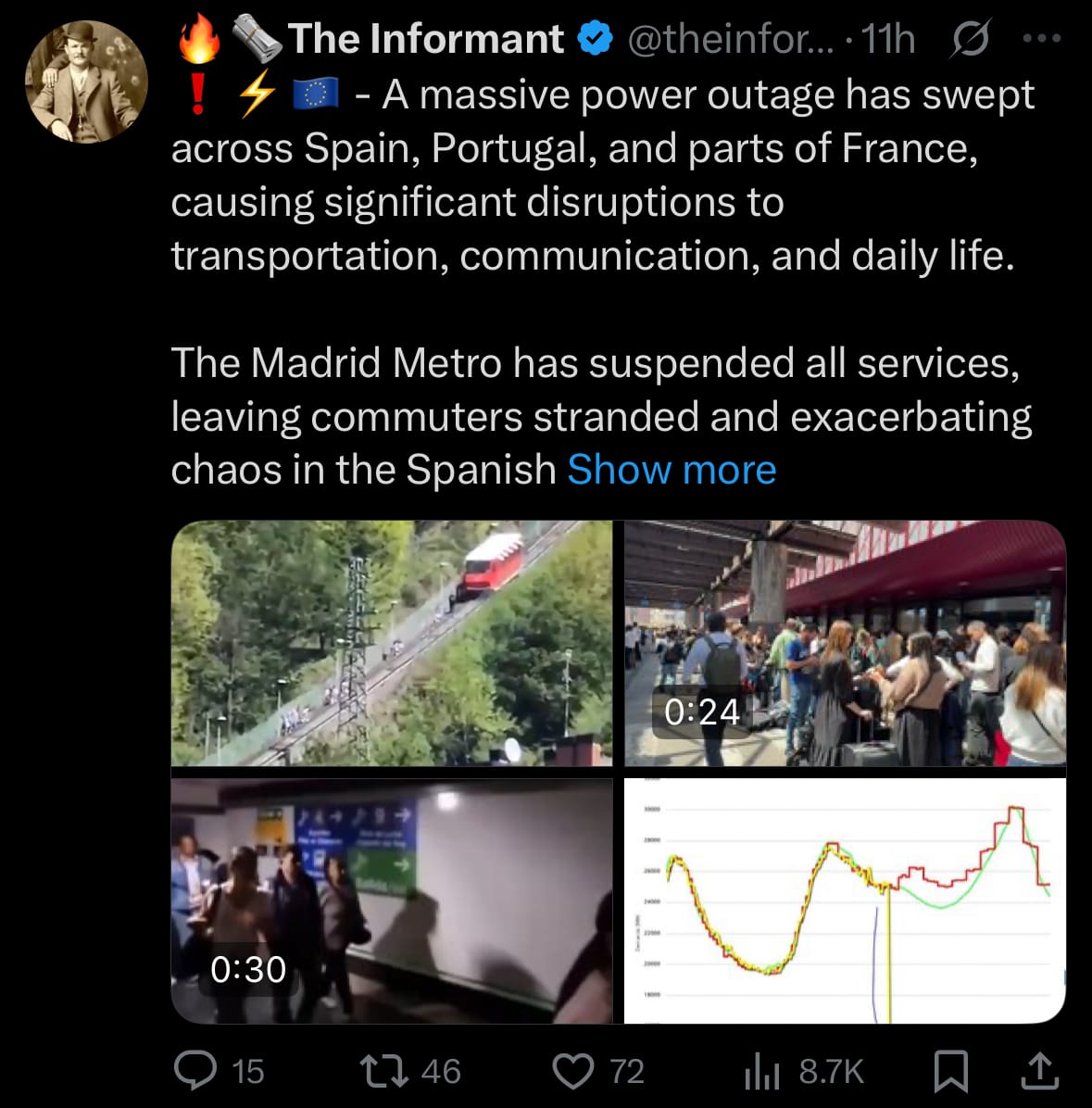
- Efforts to restore power are ongoing, led by Spain’s grid operator, Red Eléctrica, and Portugal’s Redes Energéticas Nacionais, in coordination with European energy authorities. The outage is believed to have originated from a disturbance in the European electricity grid, possibly linked to a high-tension line issue in France, though investigations are still underway to determine the precise cause. As of 8:12 PM EDT (2:12 AM CEST, April 29), over 53% of Spain’s energy demand and power to 2 million homes in Portugal have been restored, but some areas still face outages, with full recovery potentially taking days. Authorities have implemented emergency measures, including increased police presence to manage traffic and public safety, while urging residents to minimize travel and conserve resources.
Economics & Markets:
- Yesterday’s U.S. stock market:
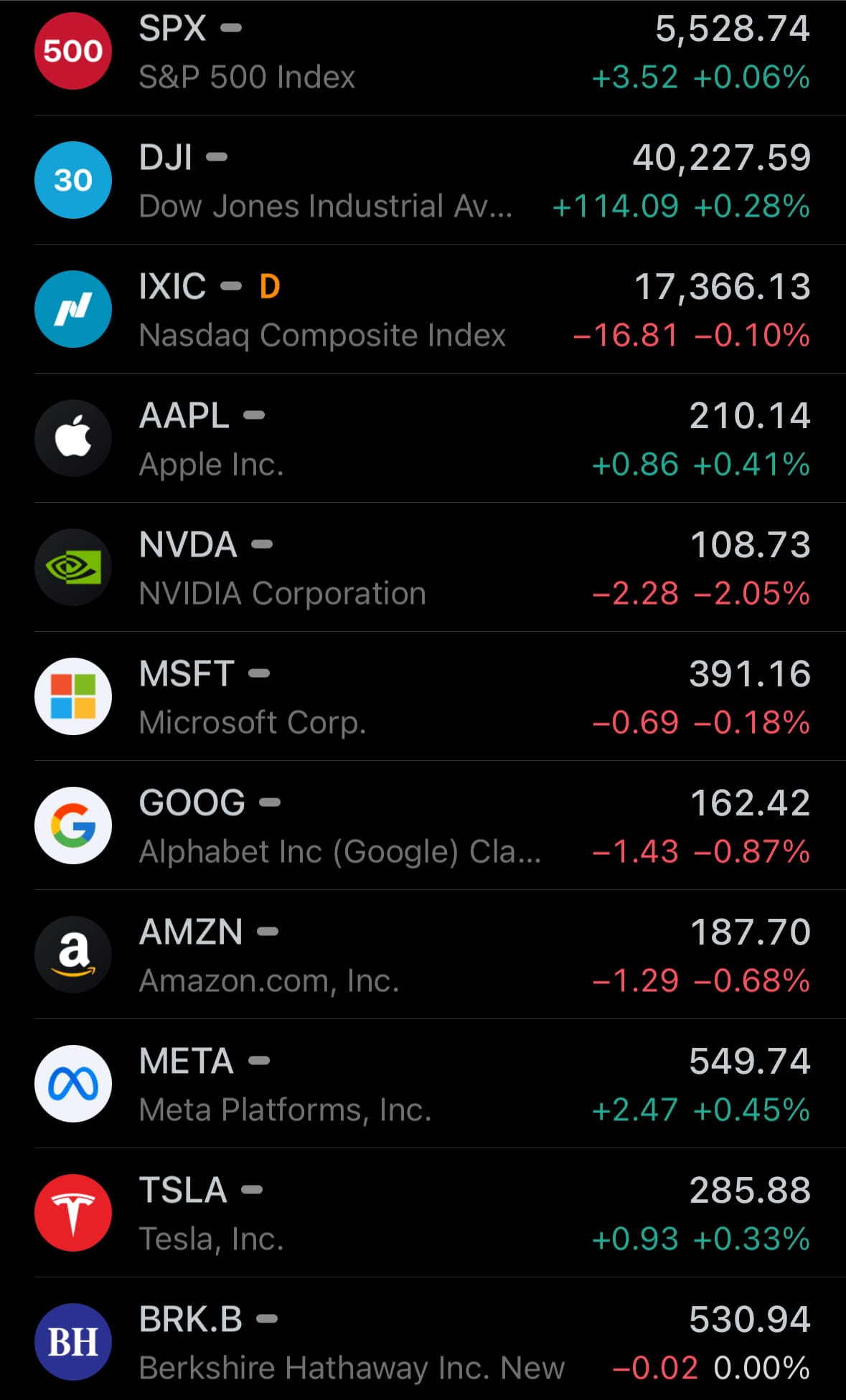
- Yesterday’s commodity market:

- Yesterday’s crypto market:
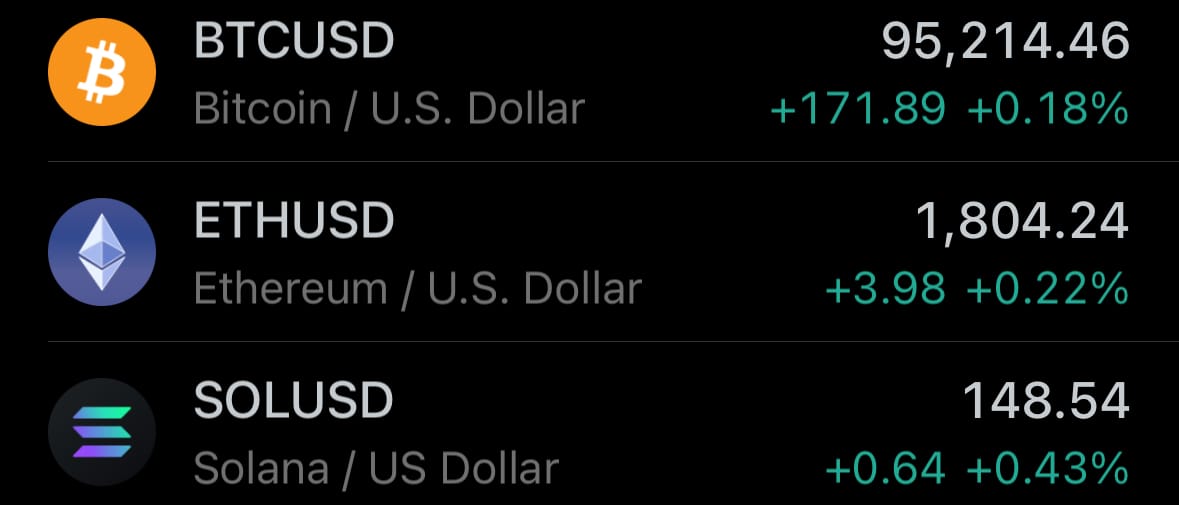
Geopolitics & Military Activity:
- Yesterday, April 28, 2025, clashes erupted in Jaramana, a predominantly Druze and Christian town south of Damascus, Syria, involving Syrian government forces, including units affiliated with Hayat Tahrir al-Sham (HTS), and local Druze factions. The conflict was triggered by unverified voice recordings, allegedly from a Druze elder in As-Suwayda, containing offensive remarks about the Islamic Prophet Muhammad, which provoked anger among some Sunni Islamist groups, though the elder denied the claims. The Druze are an Arab ethnoreligious minority who follow a monotheistic faith that originated from Ismaili Shia Islam in the 11th century, primarily residing in Syria, Lebanon, and Israel.

- Syrian government forces initiated a security operation in Jaramana, deploying armored vehicles and engaging in gunfire, while Druze militias, including the Suwayda Military Council, organized defenses to protect their community. The Syrian Observatory for Human Rights reported multiple casualties, though precise figures remain unverified; Druze leaders are seeking to mediate and de-escalate, but concerns persist about the potential for further sectarian tensions.
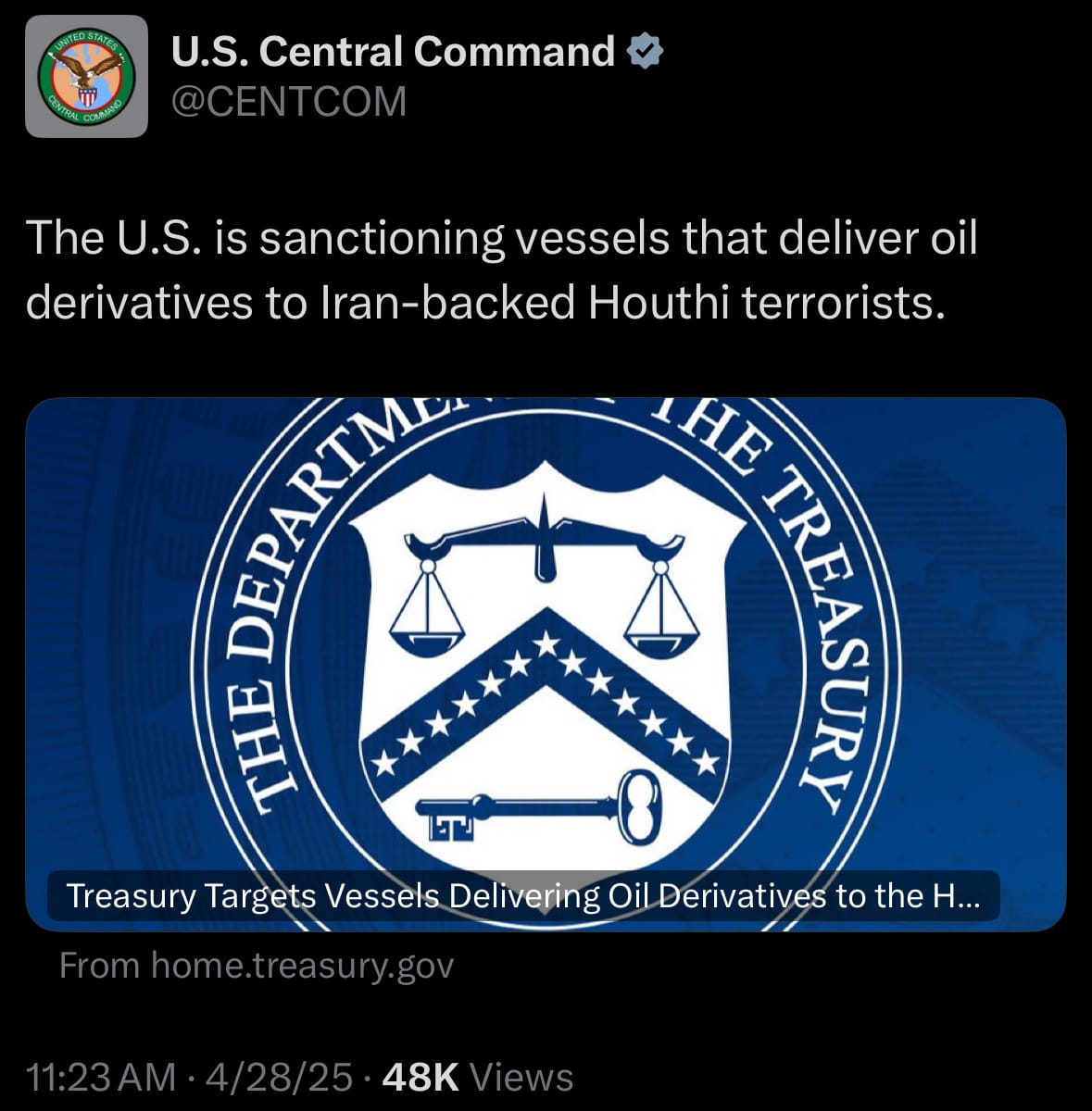
Environment & Weather:
- Yesterday, April 28, 2025, heavy rainfall caused significant flooding in Caguas, Puerto Rico, affecting neighborhoods such as Hacienda San Jose and Las Carolinas, where streets, homes, and vehicles were inundated. The National Weather Service in San Juan issued flash flood warnings until 3:45 PM AST, noting rapid water level rises due to intense rain, which disrupted daily activities and prompted safety concerns.

- The flooding resulted from an unstable weather system driven by atmospheric troughs and high moisture levels, increasing risks of urban flooding, small stream overflow, and mudslides across Puerto Rico through at least Thursday. Local authorities are responding with emergency measures, and the National Weather Service continues to monitor the situation, warning of potential additional heavy rain and thunderstorms, particularly in interior regions.
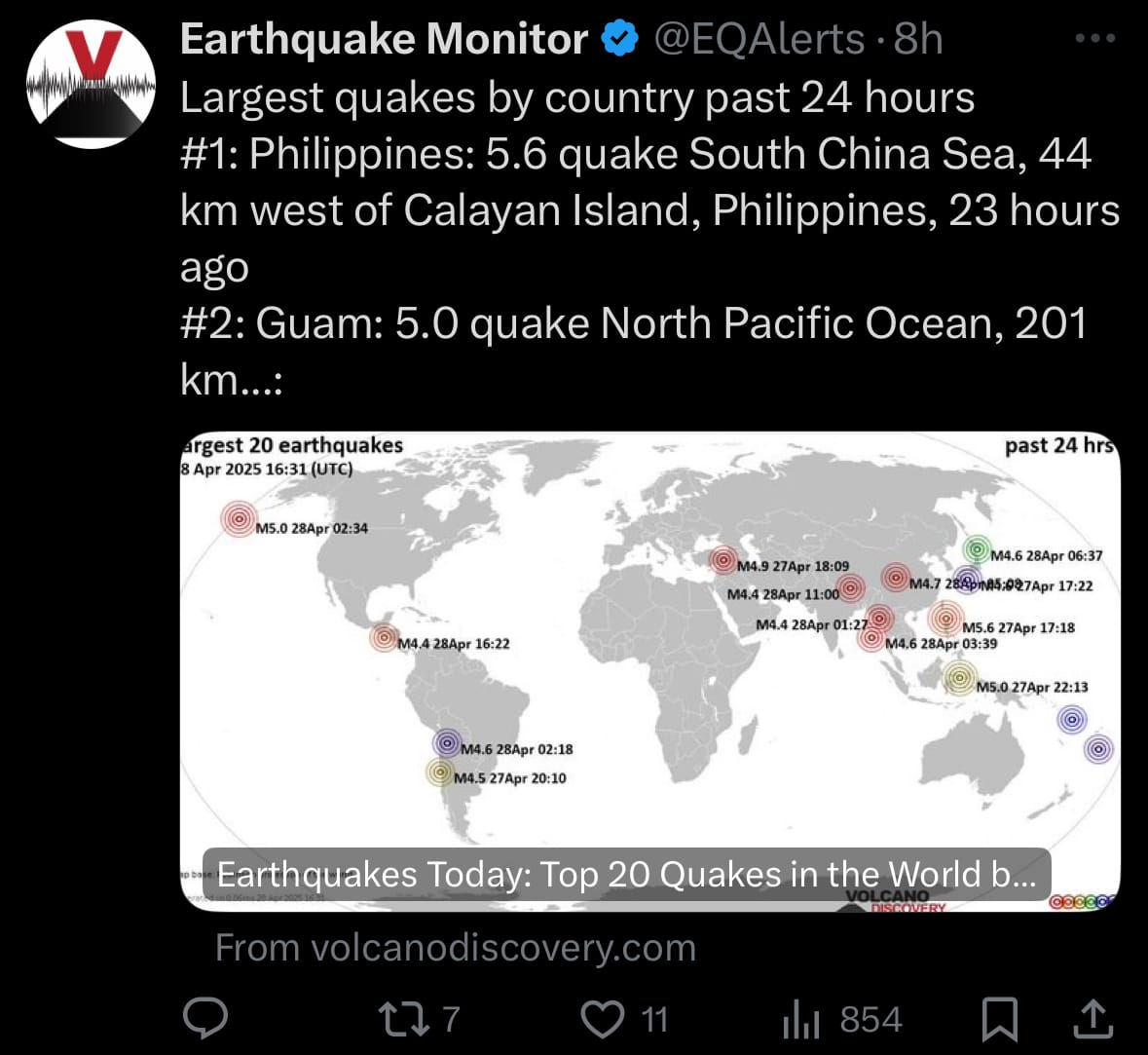
Space:
- Yesterday, April 28, 2025, China launched SatNet LEO Group 03, a set of 10 Low Earth Orbit (LEO) communication satellites, from Launch Complex 101 at the Wenchang Space Launch Site in Hainan, China, using a Long March 5B rocket with a Yuanzheng-2 upper stage at 20:10 UTC. Operated by the China Satellite Network Group, a state-owned entity, these satellites contribute to the SatNet (GuoWang) constellation, which plans to deploy 13,000 satellites to provide global broadband internet.
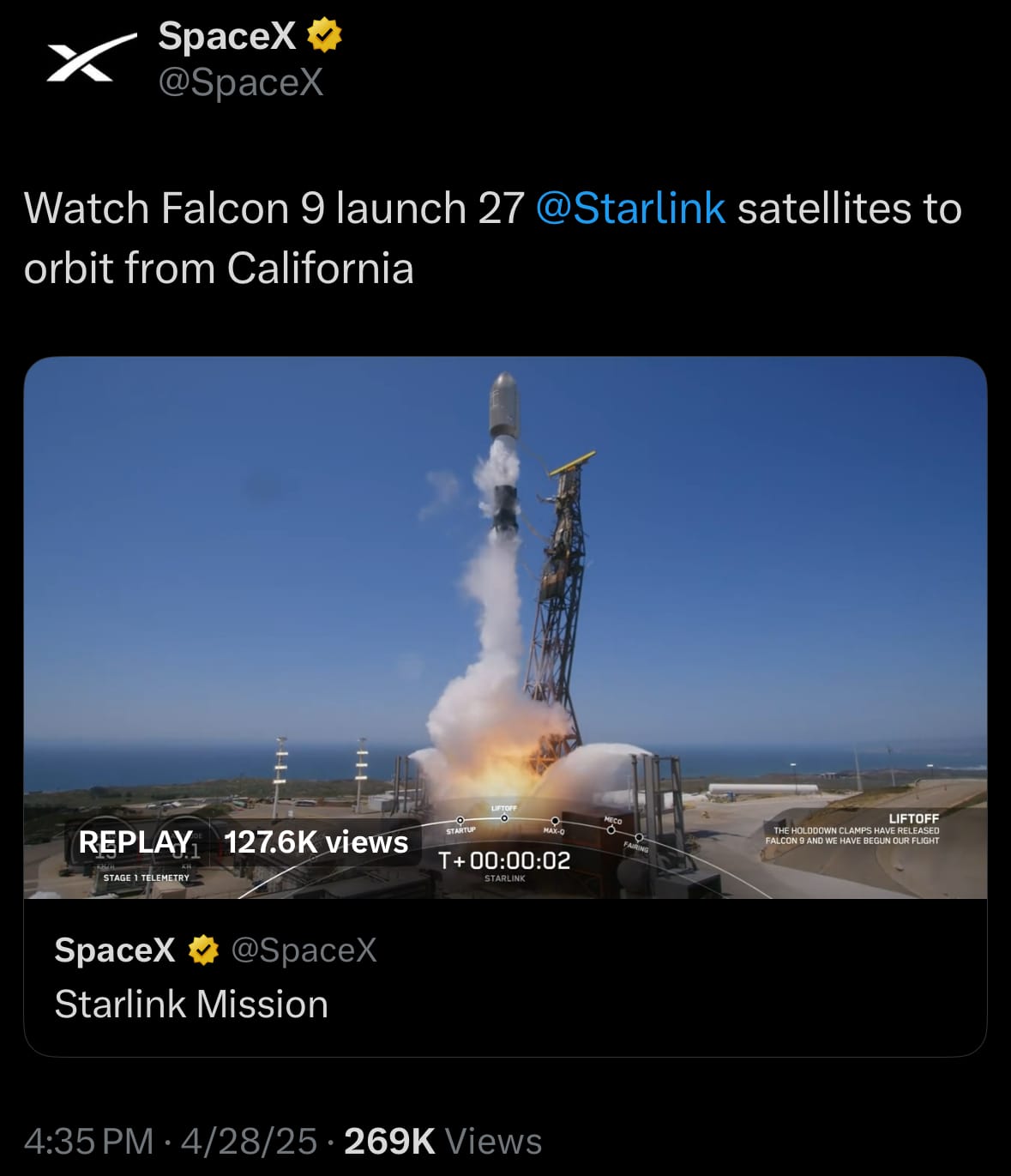
- Yesterday, April 28, 2025, SpaceX launched Starlink Group 11-9, consisting of 27 Starlink V2 Mini satellites, from Space Launch Complex 4E at Vandenberg Space Force Base, California, using a Falcon 9 Block 5 rocket at 20:42 UTC. The first-stage booster, B1063, completed its 25th flight and landed successfully on the droneship Of Course I Still Love You. This mission, adds to SpaceX’s constellation of over 7,500 satellites designed to provide global high-speed internet. The satellites were placed into low Earth orbit via a southeast trajectory, further expanding the network’s coverage and capacity.

- Yesterday, April 28, 2025, United Launch Alliance (ULA) launched Project Kuiper (KA-01), deploying 27 operational satellites for Amazon’s Project Kuiper constellation from Space Launch Complex 41 at Cape Canaveral Space Force Station, Florida, using an Atlas V 551 rocket at 7:00 PM EDT (23:00 UTC). This mission, the first major deployment for Kuiper Systems LLC, contributes to a planned 3,276-satellite constellation in low Earth orbit to deliver global high-speed internet, competing with SpaceX’s Starlink. The satellites were placed into a 450 km circular orbit at a 51.9-degree inclination, utilizing the Atlas V’s most powerful configuration with five solid rocket boosters. Following a weather-related delay earlier in April, the launch, ULA’s first of 2025, proceeded successfully, carrying the heaviest payload ever launched on an Atlas V.
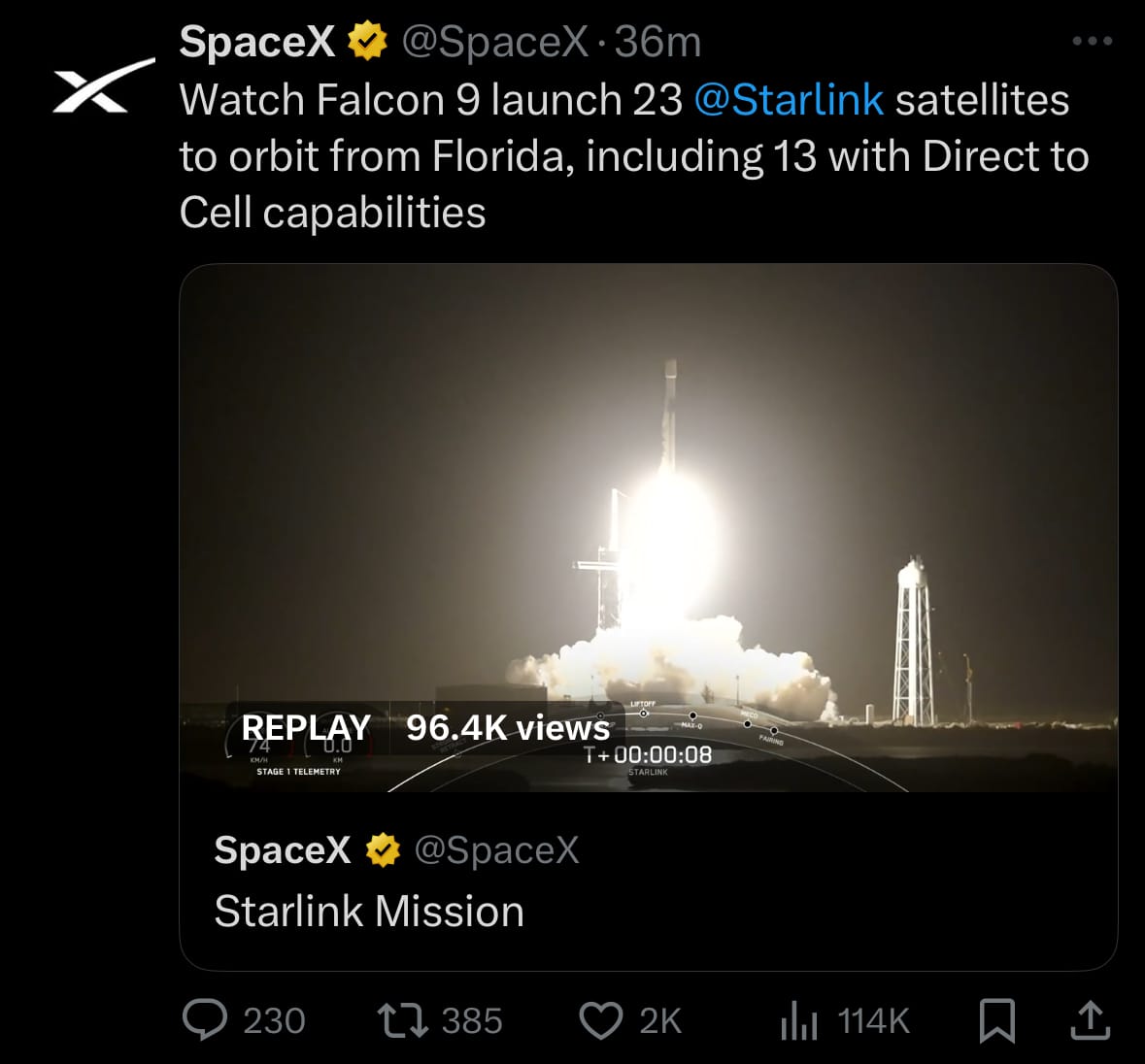
- Additionally, Yesterday, April 28, 2025, SpaceX launched a Falcon 9 rocket from Cape Canaveral Space Force Station in Florida at 10:34 p.m. ET. The mission placed a group of Starlink satellites into low-Earth orbit to expand SpaceX’s global internet network. The rocket’s first stage successfully landed on a droneship in the Atlantic Ocean approximately eight minutes after launch, showcasing the Falcon 9’s reusability.
Statistic:
- Largest public Brazilian companies by market capitalization:
- 🇧🇷 Petrobras: $71.62B
- 🇧🇷 Itaú Unibanco: $62.19B
- 🇧🇷 Nu Holdings: $57.23B
- 🇧🇷 Vale: $41.81B
- 🇧🇷 Ambev: $39.11B
- 🇧🇷 Banco Santander Brasil: $37.44B
- 🇧🇷 WEG ON: $37.27B
- 🇧🇷 BTG Pactual: $34.42B
- 🇧🇷 Banco do Brasil: $28.57B
- 🇧🇷 Banco Bradesco: $23.51B
- 🇧🇷 Klabin: $22.85B
- 🇧🇷 Itaúsa: $20.49B
- 🇧🇷 JBS: $18.49B
- 🇧🇷 Centrais Elétricas Brasileiras: $17.63B
- 🇧🇷 Telefônica Brasil: $15.67B
- 🇧🇷 BB Seguridade Participações: $14.53B
- 🇧🇷 Sabesp: $13.87B
- 🇧🇷 B3: $12.34B
- 🇧🇷 Rede D’Or São Luiz: $12.28B
- 🇧🇷 Suzano: $11.25B
- 🇧🇷 XP Inc.: $8.49B
- 🇧🇷 Embraer: $8.33B
- 🇧🇷 CPFL Energia: $8.03B
- 🇧🇷 Localiza: $8.01B
- 🇧🇷 Equatorial Energia: $7.99B
History:
- The history of currency began thousands of years ago when early human societies transitioned from barter systems to standardized mediums of exchange to facilitate trade. Around 3000 BCE, Mesopotamians used weighed silver and barley as proto-currencies, while ancient China employed cowrie shells as early as 1200 BCE. The first true coins, made of electrum, appeared in Lydia (modern-day Turkey) around 700 BCE, introducing standardized weights and state-backed value. By 500 BCE, Persia and Greece adopted coinage, spreading its use across empires. Paper money emerged in China during the Tang Dynasty (618–907 CE) as merchant receipts, evolving into government-issued notes under the Song Dynasty (960–1279 CE). In Europe, paper currency gained traction in the 17th century with promissory notes, like those issued by Sweden’s Stockholm Banco in 1661, laying the groundwork for modern banking systems.
- The modern era of currency saw the rise of fiat money, backed by government trust rather than physical commodities like gold or silver. The 19th-century gold standard linked currencies to gold, stabilizing international trade but limiting monetary flexibility. After World War II, the Bretton Woods Agreement (1944) pegged currencies to the U.S. dollar, which was convertible to gold, until the U.S. ended this convertibility in 1971, ushering in the era of floating exchange rates. Today, currencies are predominantly fiat, managed by central banks, with digital innovations like cryptocurrencies (e.g., Bitcoin, launched in 2009) challenging traditional systems. Despite these advancements, currency’s core function remains: a trusted medium of exchange, shaped by economic, political, and technological forces over millennia.
Image of the day:

Thanks for reading!
Earth is complicated, we make it simple.
Click image to view the Earth Intelligence System:
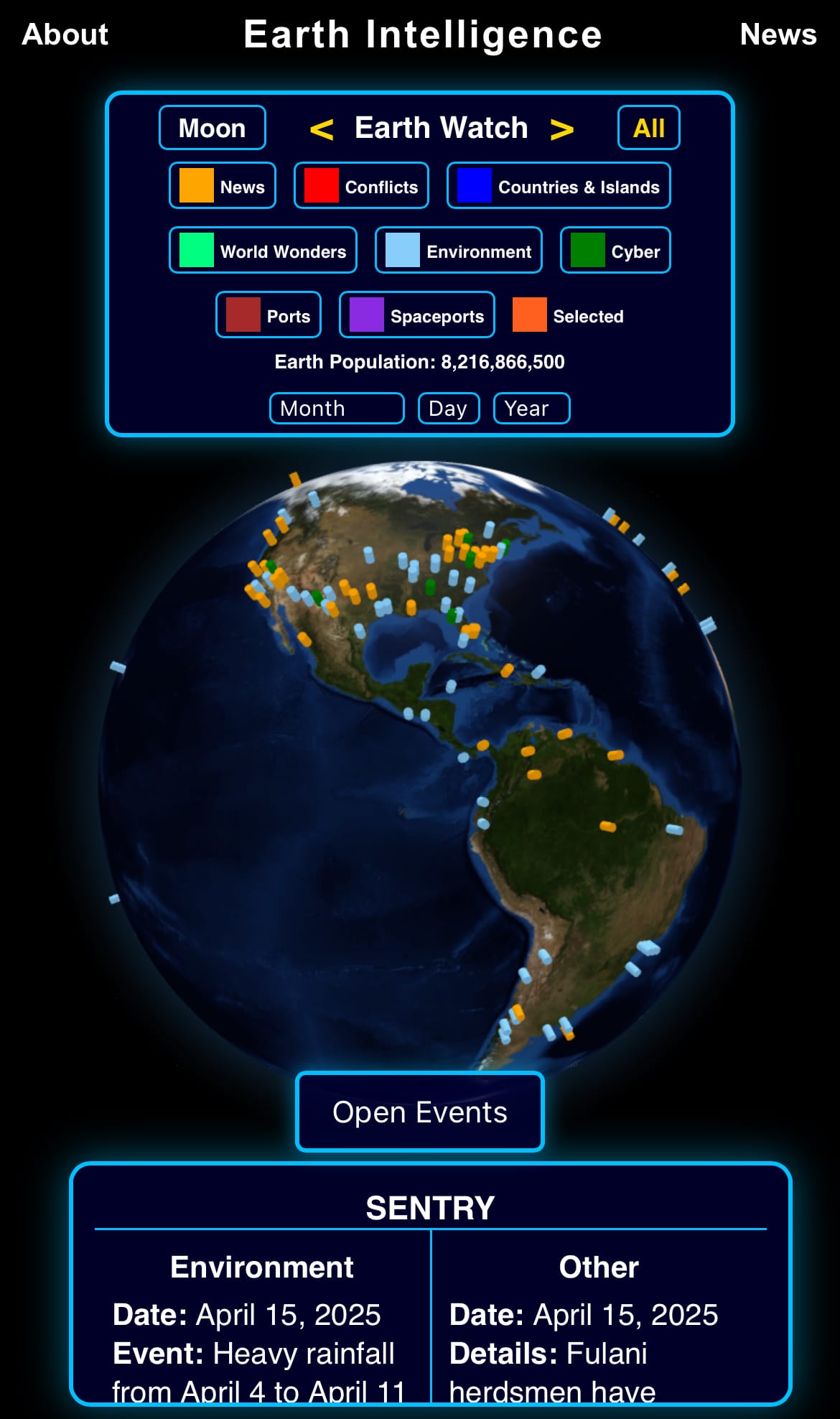


Support/Suggestions Email:
earthintelligence@earthintel.news




